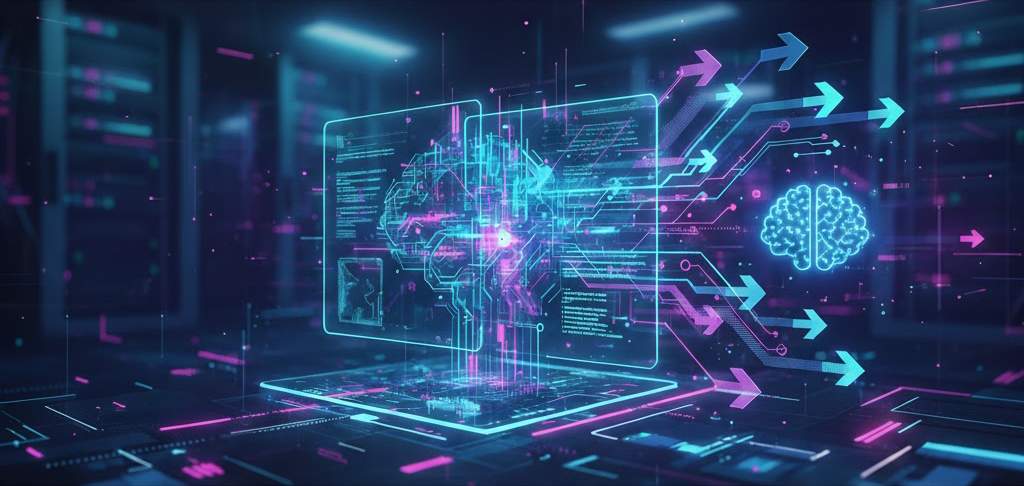A plain-language look at the biggest changes shaping 2025
It feels like every week there’s another big AI announcement, but it’s hard to tell what actually matters. The truth is, AI is quietly shifting from being a cool demo to becoming part of everyday life. It’s in your search results, your creative tools, your workplace apps, and even the ads you see.
This post breaks down what’s actually changed in the past few months, what’s new, and what the average person should know, without the hype.
1. AI Agents Are Starting to Act, Not Just Talk
What’s changed
AI tools are moving from “answering questions” to actually doing things for you. The latest McKinsey & Company survey found that 88% of organizations now use AI in at least one business function, up from 78% last year. About 23% are already experimenting with “agentic AI,” which means systems that can plan and execute multi-step tasks.
Read the McKinsey report
Why it matters
Until recently, AI mostly sat on the sidelines, giving you information or suggestions. Now it’s starting to handle tasks like scheduling, document sorting, and workflow automation. For regular users, this means AI tools may soon do more without needing much prompting.
Tips
- Try new agent features in the tools you already use.
- Check how much control you have over what the AI is doing.
- Keep a human in the loop. Automation is powerful, but not perfect.
2. Generative AI Is Becoming Everyday AI
What’s changed
Generative AI — tools that create text, images, video, and even sound — is now part of more creative platforms than ever. The Stanford AI Index reports that private investment in generative AI reached about $34 billion in 2024, up sharply from the previous year.
See the AI Index Report
Why it matters
You no longer need deep technical skills to make complex creative work. AI tools can now help you generate visuals, edit videos, compose music, or even simulate voices. But the rise of synthetic content also makes it harder to tell what’s real.
Tips
- When using AI for creative work, be open about what parts were generated.
- Be skeptical of what you see online. Not everything “photo-realistic” is real.
- Keep experimenting. The tools are getting better every month.
3. Big Money and Bigger Infrastructure
What’s changed
AI is attracting massive investment and reshaping company budgets. U.S. private AI investment hit roughly $109 billion in 2024, with a third of that going to generative AI.
Source: Stanford HAI
This level of spending means AI is moving out of research labs and into everyday software. Expect to see more AI-powered features in productivity tools, creative suites, and social media platforms.
Why it matters
AI isn’t a niche add-on anymore. It’s part of how most apps and services will operate going forward. But as companies scale up, prices and policies may shift too.
Tips
- Pay attention to how your favorite apps change their pricing.
- Understand how “free” AI features are funded — usually by your data.
- Stick with tools that are transparent about how they use your information.
4. Regulation and Responsibility Are Catching Up
What’s changed
Governments around the world are finally setting real rules for AI. In the U.S., the federal government released the America’s AI Action Plan, outlining how agencies should regulate AI use.
Read the plan on WhiteHouse.gov
States are also creating their own AI laws.
See the NCSL AI legislation tracker
Europe has moved forward with its AI Act, which sets strict transparency and safety rules for AI developers.
Coverage on Le Monde
Why it matters
The new rules will affect how companies can use AI and what they must disclose. That means you’ll start seeing clearer labeling of AI-generated content, more transparency about data use, and potentially new privacy protections.
Tips
- Look for disclosures about how AI models are trained.
- Don’t rely on AI tools for critical or sensitive work without human review.
- Follow AI policy updates — they’ll shape how these systems work in daily life.
5. How to Stay Smart About AI in 2025
AI is becoming part of daily life, whether you use it directly or not. Here’s how to stay balanced and informed:
- Explore what’s new in your favorite tools, but don’t let AI take over everything.
- Double-check AI outputs, especially for work, school, or financial matters.
- Learn a bit about how models are trained and what their limits are.
- Protect your data by reading permission settings carefully.
- Keep an eye on pricing changes — many free tools won’t stay free forever.
- Treat AI as a tool, not a decision-maker. It’s meant to assist you, not replace you.
Final Thoughts
AI in 2025 feels less like magic and more like infrastructure. It’s woven into everyday products, shaping how we write, create, search, and organize information. The technology is becoming more capable, but also more complex. The key for most people is to stay curious, experiment wisely, and maintain a sense of control over what AI does on your behalf.
Further Reading




